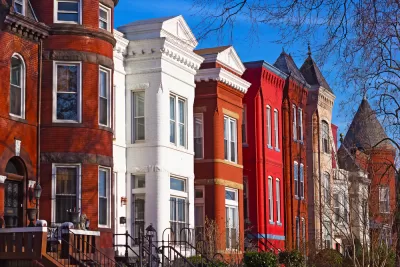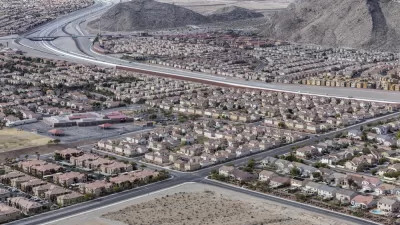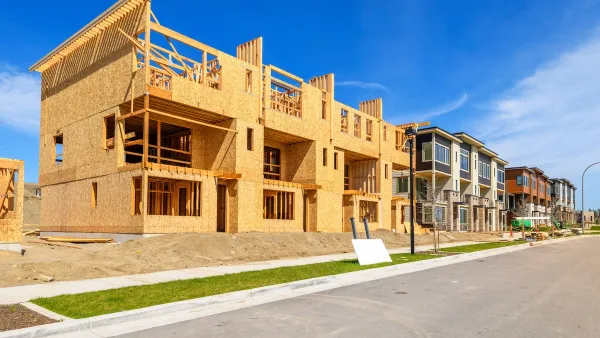Despite a downtown construction boom, housing is still scarce across the Capital Region. And nearly two-thirds of new homes built since the year 2000 have been single-family structures.

According to a new report, the greater Washington D.C. region gained almost twice as many people as units of housing over the past 20 years. "Despite the flurry of cranes in downtown Washington," the authors write for Brookings, "the exurban jurisdictions collectively have built more than twice as many housing units as the region's inner core."
Since 2000, almost two-thirds of new homes constructed have been single-family structures, including rowhouses. That has a variety of negative effects, including increased traffic congestion throughout the region and a heavy impact on the environment.
It's also the case that "housing values in the Capital Region have been rising faster than incomes for most of the last 20 years, with a brief respite during the Great Recession [...] Perhaps not surprisingly, the Capital Region has some of the highest home values relative to income in the country."
Worsening affordability detriments the region's economy as a whole. "Employers in high-cost regions have difficulty attracting and retaining workers, especially younger workers who are more likely to be renters," the authors write. Commuters also lose valuable time stuck in traffic, and low-income households feel the effects first.
FULL STORY: The Capital Region needs more housing

Maui's Vacation Rental Debate Turns Ugly
Verbal attacks, misinformation campaigns and fistfights plague a high-stakes debate to convert thousands of vacation rentals into long-term housing.

Planetizen Federal Action Tracker
A weekly monitor of how Trump’s orders and actions are impacting planners and planning in America.

In Urban Planning, AI Prompting Could be the New Design Thinking
Creativity has long been key to great urban design. What if we see AI as our new creative partner?

San Francisco Mayor Backtracks on Homelessness Goal
Mayor Dan Lurie ran on a promise to build 1,500 additional shelter beds in the city, complete with supportive services. Now, his office says they are “shifting strategy” to focus on prevention and mental health treatment.

How Trump's HUD Budget Proposal Would Harm Homelessness Response
Experts say the change to the HUD budget would make it more difficult to identify people who are homeless and connect them with services, and to prevent homelessness.

The Vast Potential of the Right-of-Way
One writer argues that the space between two building faces is the most important element of the built environment.
Urban Design for Planners 1: Software Tools
This six-course series explores essential urban design concepts using open source software and equips planners with the tools they need to participate fully in the urban design process.
Planning for Universal Design
Learn the tools for implementing Universal Design in planning regulations.
Gallatin County Department of Planning & Community Development
Heyer Gruel & Associates PA
JM Goldson LLC
Mpact (founded as Rail~Volution)
City of Camden Redevelopment Agency
City of Astoria
Jefferson Parish Government
Camden Redevelopment Agency
City of Claremont





























